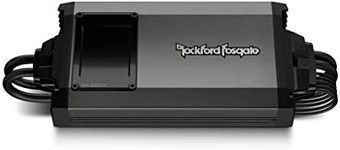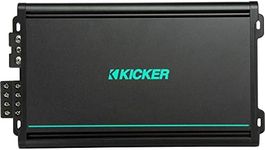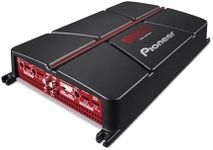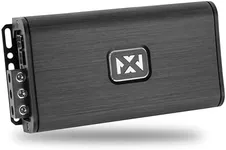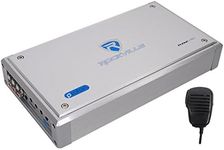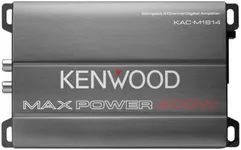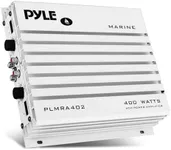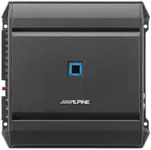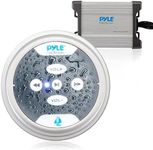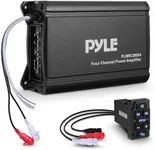Buying Guide for the Best 4-Channel Marine Amplifiers
Choosing the right 4-channel marine amplifier can significantly enhance your boating experience by providing high-quality sound. When selecting an amplifier, it's important to consider various specifications to ensure it meets your needs and performs well in a marine environment. Here are some key specs to look at and how to approach them.Power OutputPower output refers to the amount of power the amplifier can deliver to your speakers. This is important because it determines how loud and clear your audio will be. Power output is usually measured in watts per channel. For casual listening, 50-75 watts per channel might be sufficient. For louder and more dynamic sound, look for amplifiers with 100-150 watts per channel or more. Consider your typical usage and the size of your boat when deciding on the power output.
Marine CertificationMarine certification indicates that the amplifier is designed to withstand the harsh conditions of a marine environment, such as moisture, salt, and temperature fluctuations. This is crucial for durability and longevity. Look for amplifiers that are specifically labeled as marine-certified or have features like conformal coating on the circuit boards. If you frequently encounter rough weather or plan to use the amplifier in a saltwater environment, marine certification is a must.
Signal-to-Noise Ratio (SNR)The signal-to-noise ratio measures the clarity of the audio signal by comparing the level of the desired signal to the level of background noise. A higher SNR means clearer sound. SNR is typically measured in decibels (dB). For high-quality audio, look for an SNR of 90 dB or higher. If you are an audiophile or want the best possible sound quality, prioritize amplifiers with a high SNR.
Frequency ResponseFrequency response indicates the range of frequencies the amplifier can reproduce. This is important for ensuring that all aspects of your audio, from deep bass to high treble, are accurately represented. A typical frequency response range for marine amplifiers is 20 Hz to 20 kHz. If you enjoy a wide variety of music genres, look for amplifiers with a broad frequency response to capture all the nuances of your audio.
Size and InstallationThe size and installation options of the amplifier are important for fitting it into your boat. Marine amplifiers come in various sizes, and you need to ensure that the one you choose fits the available space and can be securely mounted. Consider the dimensions and weight of the amplifier, as well as the ease of installation. If you have limited space or prefer a simpler setup, look for compact amplifiers with straightforward installation processes.
Cooling SystemA cooling system helps prevent the amplifier from overheating, which is especially important in a marine environment where temperatures can fluctuate. Look for amplifiers with built-in cooling systems, such as fans or heat sinks. If you plan to use the amplifier for extended periods or in hot climates, a robust cooling system is essential to maintain performance and prevent damage.
